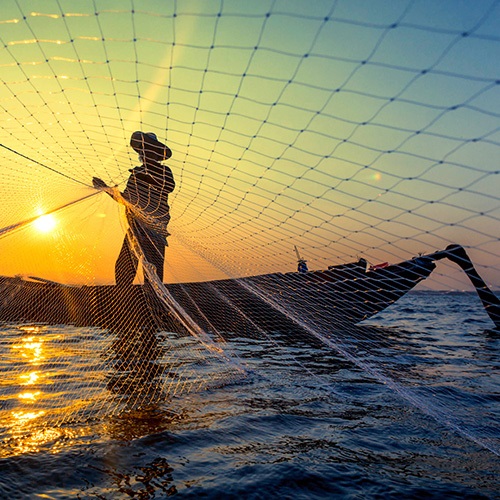This is a condensed version of an article from the Australia Post Collectables blog, reproduced with permission. Read the full article here
Professor Keith Sainsbury is a scientist with more than 30 years of experience in providing scientific advice on sustainable fishery management, aquaculture, biodiversity and seabed habitat health. For much of this time, Keith led relevant research programs in the CSIRO and for the past 10 years has been a Commissioner with the Australian Fishery Management Authority and a Board member for the Marine Stewardship Council (MSC).
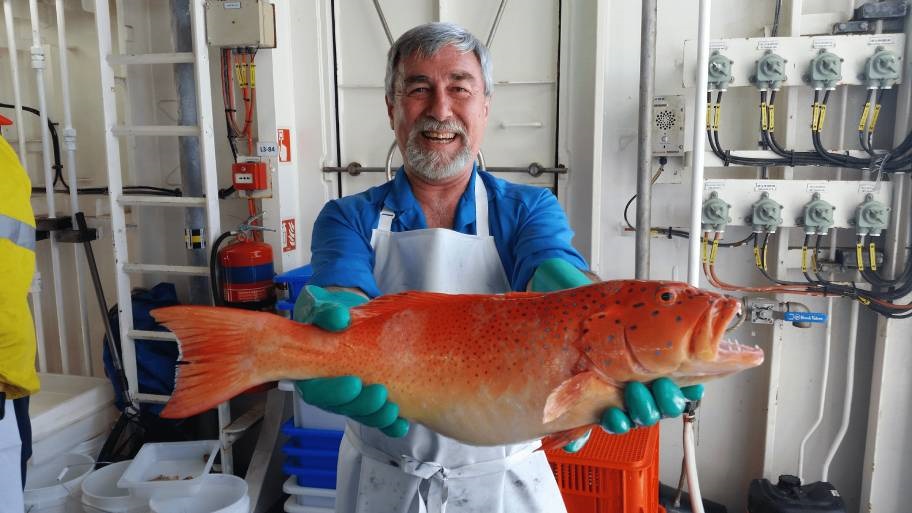
Keith also chaired the United Nations Food and Agricultural Organisation process that produced guidelines for the Ecosystem Approach to Fishery Management and he is a professor at the University of Tasmania. As such, Keith has been an invaluable consultant to the researcher working on the Sustainable Fish stamp issue, released 14 March 2019.
Keith defines a sustainable fishery as one that can be continued indefinitely while maintaining healthy and productive fish populations and preserving the structure and function of the relevant ecosystems.
The Sustainable Fish stamp issue presents three species of fish that are deemed as sustainable in Australia, including two that are certified to the MSC Fisheries Standard: Patagonian Toothfish (Dissostichus eleginoides) and Blue Grenadier (Macruronus novaezelandiae). The stamp illustrations are by Dr Lindsay Marshall, who has a PhD in shark morphology and fisheries science, as well as an honours degree in marine science. Lindsay also illustrated Rays of the World by CSIRO Press.
Sustainable Fish: Blue Grenadier stamp
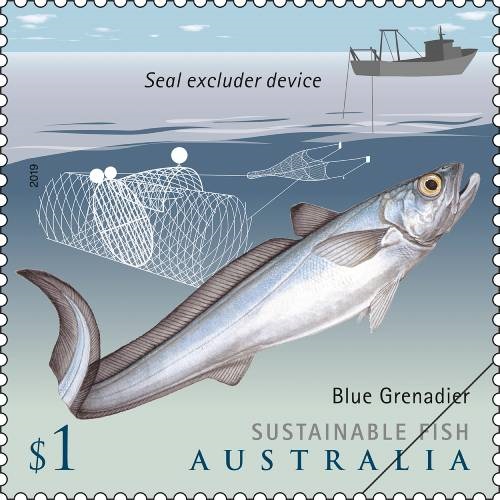
© Copyright Australian Postal Corporation
In relation to Blue Grenadier, Keith notes that beneficial practices have included the development and use of seal excluder devices. A seal excluder device, as pictured on the Blue Grenadier stamp, contains a rigid barrier grid, which is attached to the circumference of the net to help guide seals towards an escape hole that is positioned either above or below the grid.
Sustainable Fish:Patagonian Toothfish stamp
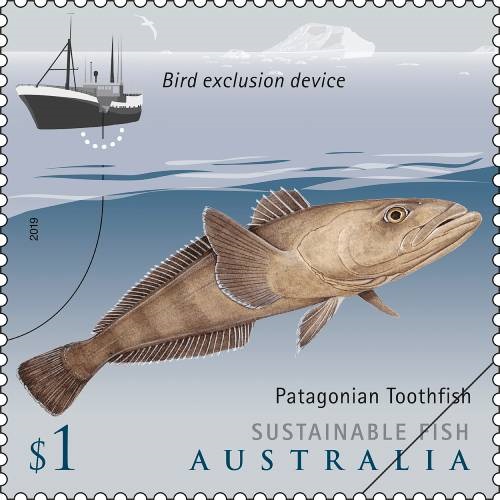
© Copyright Australian Postal Corporation
Australia’s Patagonian Toothfish fisheries have developed practices and devices to minimise seabird interactions with longlines. A bird exclusion device forms a physical and visual barrier around the area where line hauling occurs and prevent seabirds from accessing baited hooks.
The device contains a string of floats which encircle the line hauling area on the surface (as pictured on the Patagonian Toothfish stamp). Attached to the floats are a series of ropes which run up to a headline. The device is suspended from one or two booms which extend alongside the vessel.
“These measures have been so successful that there have been no seabird deaths for several years,” noted Keith.
In Australia, in addition to undertaking modifications to fishing gear, managers of commercial fisheries monitor both stock and fishing levels, as well as a range of other environmental factors. Government observers travel regularly to fisheries, and monitoring devices are used on boats in many fisheries to ensure compliance with entry limits and conditions.
“Nationally the status of most Australian fish stocks is compiled and reported periodically, with the most recent assessment (2018) categorising 71 per cent of the 355 assessed stocks as “sustainable” and eight per cent as ‘overfished’.”
Australia also rates highly on an international scale for its sustainable fishing practices
“In 2000, the Western Rock Lobster fishery was the first fishery in the world to receive full certification against the then new sustainability standard of the MSC and it has maintained that sustainability certification through to the present day. Since then several other Australian fisheries have also received MSC certification – including the fisheries for Gulf of Carpentaria and Exmouth Gulf Prawns, Southern Ocean Patagonian Toothfish, Blue Grenadier, South Australian Sardine, Pearl Oyster, and Lakes and Coorong Pipi,” says Keith.
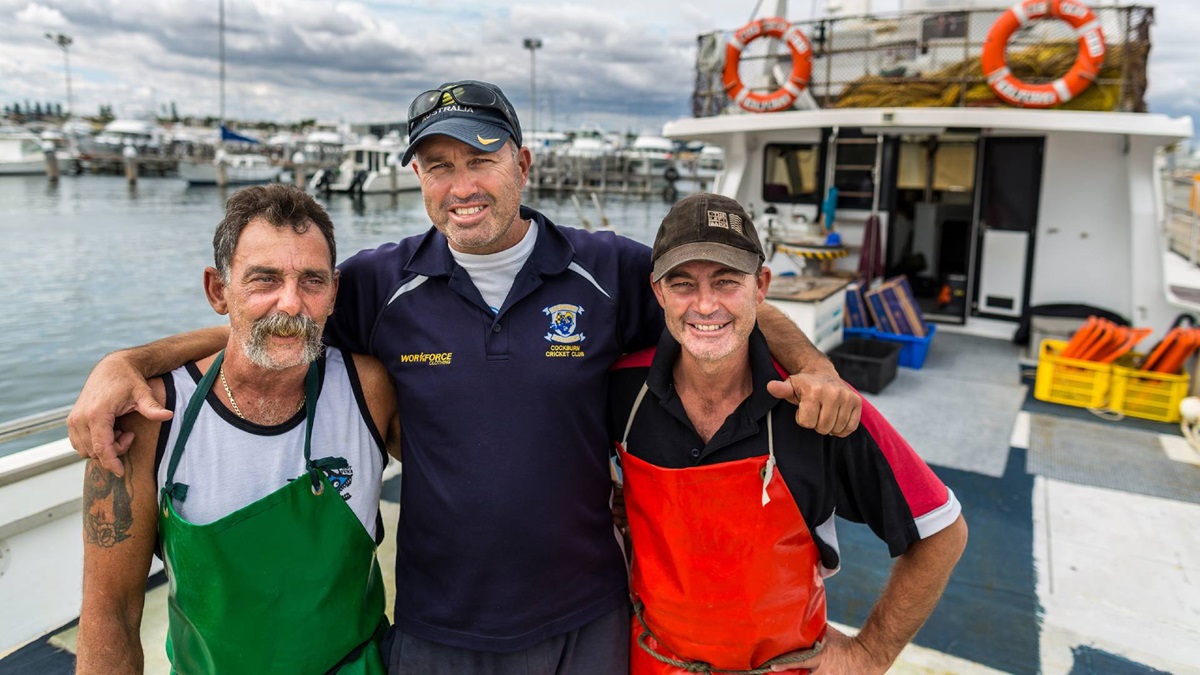
Anne Gabriel is the Oceania Program Director of the MSC. As such, Anne leads programs in Australia, New Zealand and the Western Central Pacific Ocean. Anne agrees that Australia is doing much to help lead the way on sustainable fishing.
“Australia is certainly a country of seafood and ocean lovers. We are lucky to have vast and beautiful oceans that contain important natural and biological resources. They supply food, play a significant role in determining our climate, and are fundamental to our national identity.”
“Sustainability is a word that gets used a lot. However, it is one thing to say you’re sustainable, but quite something else to prove you are. Leadership from state and federal government, industry, academia and conservation groups has placed Australia in a positive light as a strong performing nation for fisheries management in the world,” says Anne.
The Sustainable Fish stamp issue is out now, online, at participating Post Offices and via mail order on 1800 331 794, while stocks last.
Written material and stamp imagery has been reproduced with permission of the Australian Postal Corporation. © Copyright Australian Postal Corporation

